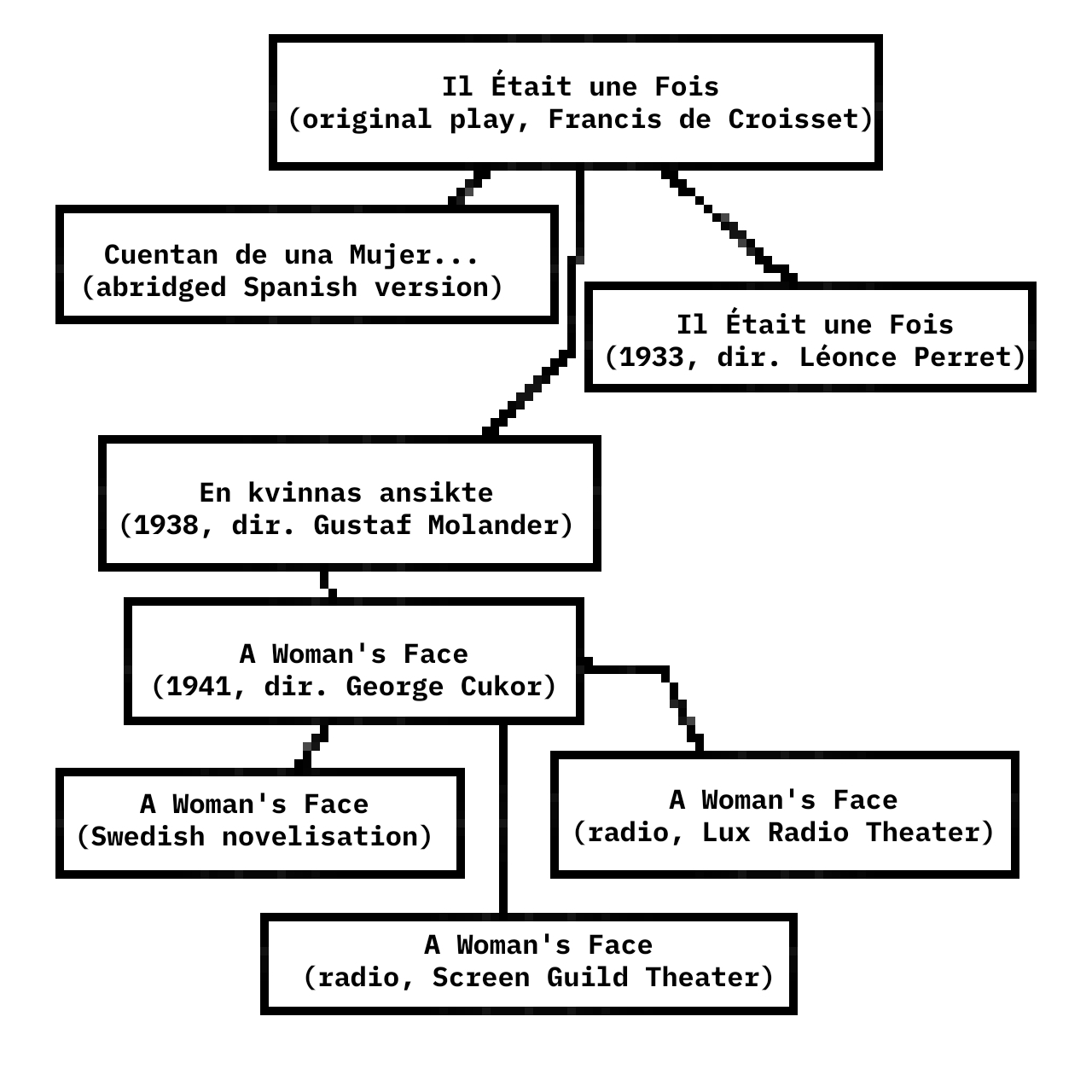OMG French Film
5 October 2024 11:04A few months ago (it has been that long o_O ), I wrote a summary of a play's summary. TLDR: if the abridged version of A Woman's Face is any indicative of its original's quality, then the films just made everything better (I assume the Molander/Bergman version is good).
However! There's a French film from 1933 that seems to be a closer adaptation, but French films that aren't the crème de la crème in the eyes of a cinephile are hard to find (see: French FP1, I want to see Charles Boyer doing that weirdo Ellissen).
Plot twist, it was on [insert Russian website here]. I'll have to give it a watch sometime. For now, look at the web of adaptations.

Oof.
EDIT: the novelisation is actually Finnish *facepalm*
However! There's a French film from 1933 that seems to be a closer adaptation, but French films that aren't the crème de la crème in the eyes of a cinephile are hard to find (see: French FP1, I want to see Charles Boyer doing that weirdo Ellissen).
Plot twist, it was on [insert Russian website here]. I'll have to give it a watch sometime. For now, look at the web of adaptations.

Oof.
EDIT: the novelisation is actually Finnish *facepalm*











